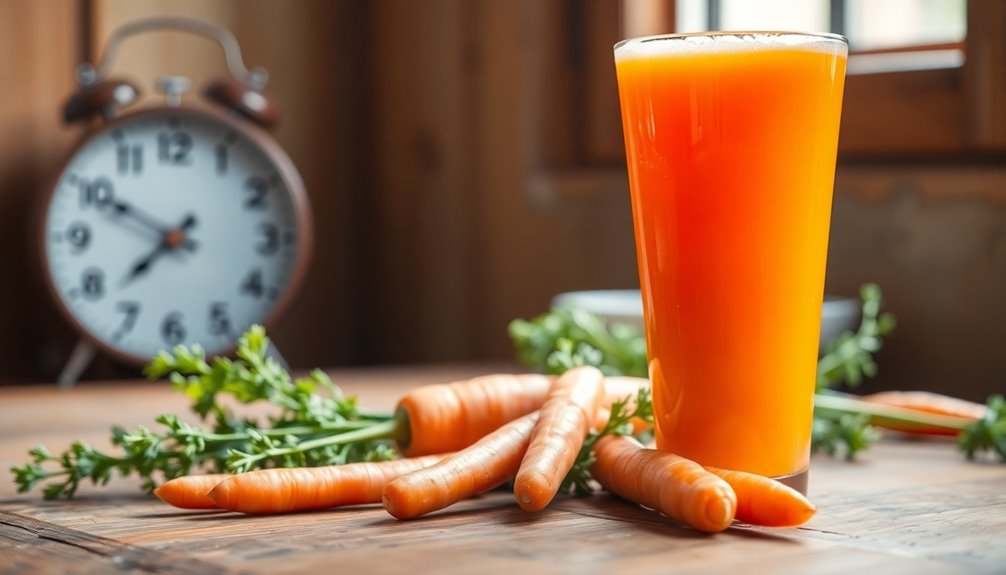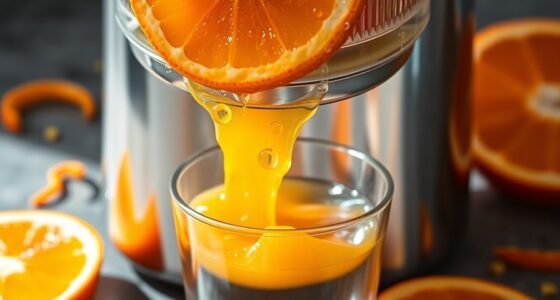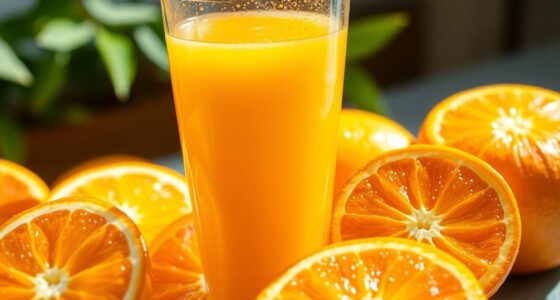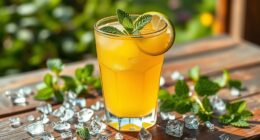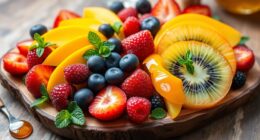Carrot juice lasts differently based on its source. If you make it at home, it'll stay fresh for only 2-3 days in the fridge. Store-bought juice can last 7-10 days once opened and even up to 24 months when unopened. If you freeze it, you can maintain quality for 8-12 months. Once thawed, consume within 3-5 days for the best taste. Want to know more about storing and enjoying your carrot juice?
Key Takeaways
- Homemade carrot juice lasts 2-3 days in the refrigerator when stored in an airtight container.
- Opened store-bought carrot juice remains fresh for 7 to 10 days, depending on the brand.
- Unopened store-bought carrot juice can last 18 to 24 months if stored properly.
- Frozen carrot juice maintains best quality for 8 to 12 months; it can be safe to consume indefinitely at 0°F.
- Thawed carrot juice should be consumed within 3 to 5 days for optimal taste and safety.
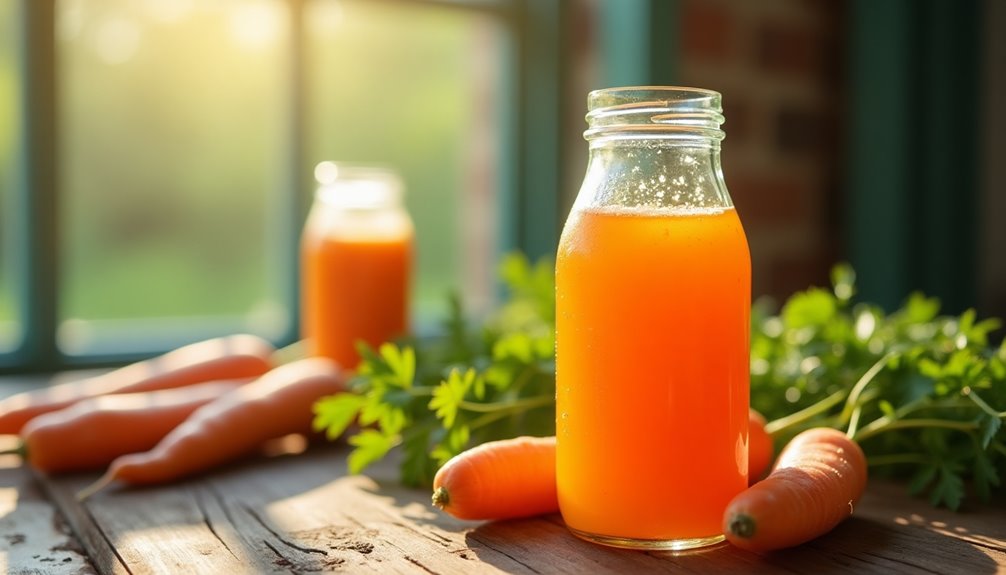
When you make carrot juice at home, it typically lasts only 2-3 days in the refrigerator, which can be a short timeframe if you're not planning to drink it right away. If you've invested time in making your homemade carrot juice, you'll want to maximize its freshness and enjoy it while it's still delicious. To do this, store it in an airtight container to limit exposure to air, which can accelerate spoilage. The quality of homemade juice can degrade quickly, so it's best to plan your consumption accordingly.
On the other hand, if you opt for store-bought carrot juice, you'll find that the shelf life is significantly longer. Once opened, it can remain fresh for about 7 to 10 days in the refrigerator. This gives you a bit more flexibility in terms of when you can enjoy your juice after purchasing it. However, always check the expiration date on the label before consuming any store-bought juice, as this can vary depending on the brand and how the juice is processed.
Unopened store-bought carrot juice can last an impressive 18 to 24 months if stored properly, making it a convenient option for those who enjoy carrot juice but don't want to make it from scratch regularly.
If you're looking for an even longer shelf life, freezing carrot juice is an excellent solution. When properly frozen, carrot juice can maintain its best quality for 8 to 12 months. It's crucial to store the juice in a freezer-safe container, allowing for some expansion as it freezes.
While it can be safe to consume indefinitely if kept at 0°F, the texture and flavor may begin to deteriorate after that 12-month mark.
Once you're ready to consume your frozen carrot juice, you'll need to thaw it. After thawing, it can last an additional 3 to 5 days in the refrigerator. Make sure to consume it during this timeframe to enjoy the best taste and quality. If you notice any off smells or flavors, it's best to err on the side of caution and discard it.
Frequently Asked Questions
How Long Does Carrot Juice Last in the Fridge?
You should know that carrot juice can last a different amount of time depending on whether it's store-bought or homemade.
Store-bought carrot juice typically lasts about 7 to 10 days in the fridge if you store it properly.
If you make it at home, you'll want to consume it within 2 to 3 days.
Always keep it in an airtight container and check for spoilage signs before drinking it.
How to Know When Carrot Juice Is Bad?
To know when carrot juice is bad, trust your senses. If you notice an off odor, it's likely spoiled.
Check for color changes; darkening or dullness signals a problem.
Look for excessive separation or chunkiness, which indicates spoilage, and taste a small amount—if it's sour or bitter, don't drink it.
Finally, if you see mold or floating particles, discard the juice immediately to stay safe.
How Long Does Homemade Juice Last in the Fridge?
Have you ever wondered how long your homemade juice can stay fresh in the fridge?
Typically, it lasts about 2 to 3 days when stored properly. To keep it at its best, store your juice in an airtight container right after making it. It’s also important to keep your juice refrigerated to prevent spoilage. If you’re wondering how long can apple juice be unrefrigerated, the general guideline is no more than two hours at room temperature. After that time, harmful bacteria can start to grow, making it unsafe to consume. So, always aim to enjoy your fresh juice within the recommended time frame for the best experience.
Always check for any off odors or changes in color before drinking. For optimal freshness and nutrient retention, consuming it within the first 24 hours is ideal.
How to Store Homemade Carrot Juice?
To store homemade carrot juice, refrigerate it immediately after juicing.
Use an airtight plastic container to minimize exposure to air and prevent spoilage. Keep your refrigerator temperature between 35-38°F (1.6-3.3°C) to maintain freshness.
Avoid glass bottles, as plastic with tight lids is better for preventing contamination.
If you want to extend its life, consider freezing the juice in airtight containers, leaving at least 1-inch headspace.
Conclusion
In the grand scheme of things, it's funny how a simple bottle of carrot juice can spark a conversation about freshness and health. Whether you keep it in the fridge for a few days or decide to drink it right away, just remember that its vibrant taste reflects how well you care for it. So, next time you pour a glass, think about how that moment connects you to your health journey—one sip at a time. Cheers!
Cindy thoroughly researches juicing trends, techniques, and recipes to provide readers with practical advice and inspiration. Her writing style is accessible, engaging, and designed to make complex concepts easy to understand. Cindy’s dedication to promoting the advantages of juicing shines through her work, empowering readers to make positive changes in their lives through the simple act of juicing.

